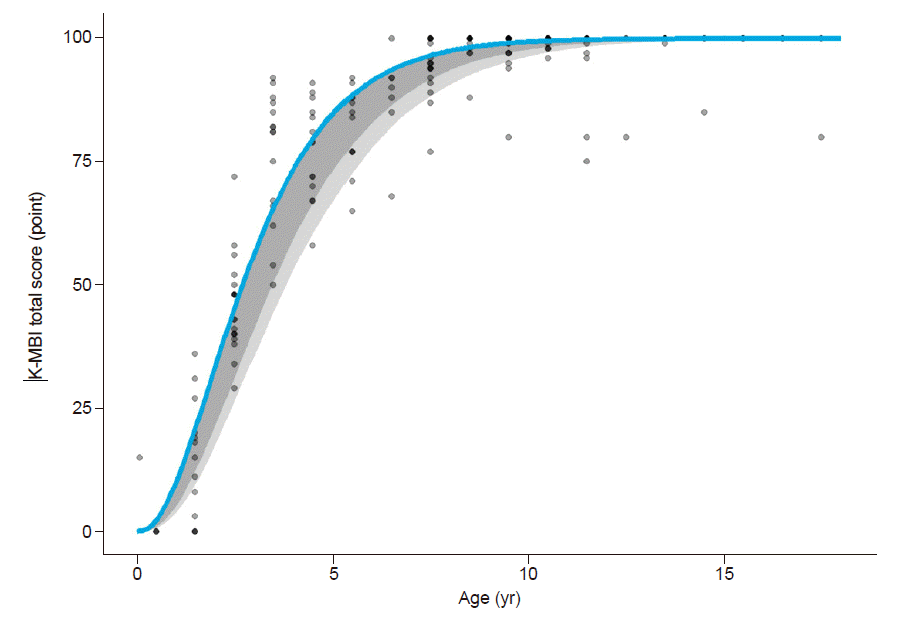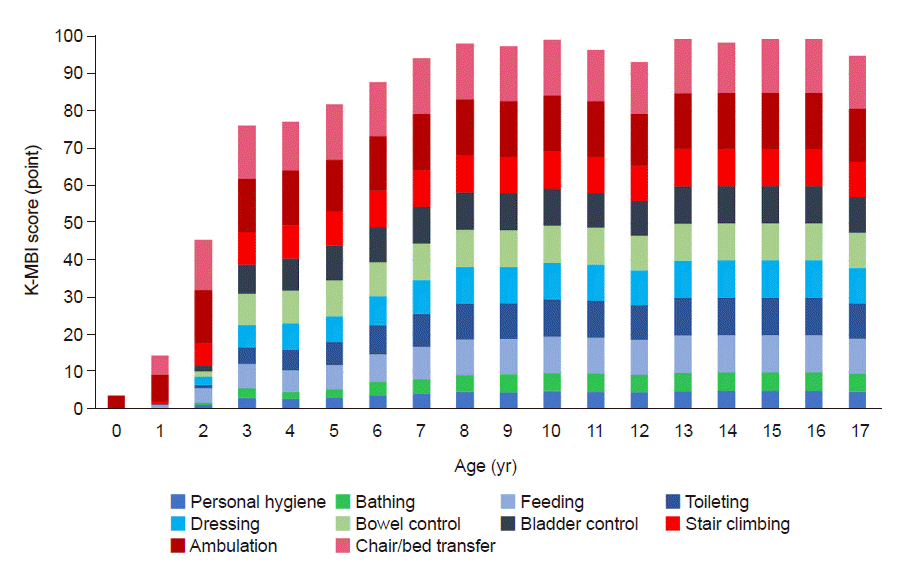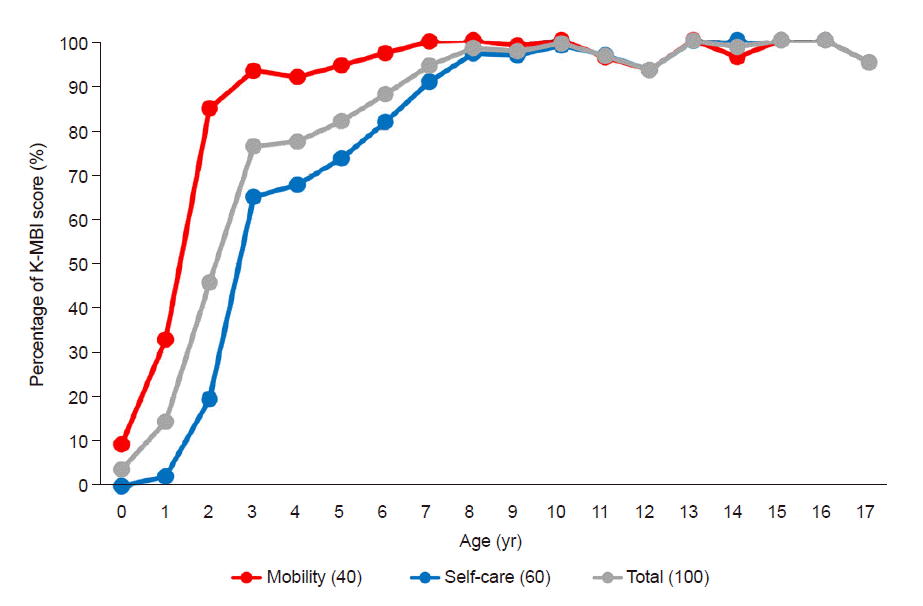1. Mlinac ME, Feng MC. Assessment of activities of daily living, self-care, and independence. Arch Clin Neuropsychol. 2016; 31:506–16.

2. Kang MG, Kim OS, Hoogendijk EO, Jung HW. Trends in frailty prevalence among older adults in Korea: a nationwide study from 2008 to 2020. J Korean Med Sci. 2023; 38:e157.

3. Mayer RS, Engle J. Rehabilitation of individuals with cancer. Ann Rehabil Med. 2022; 46:60–70.

4. Uchida K, Uchiyama Y, Domen K, Koyama T. Outcome prediction for patients with ischemic stroke in acute care: new three-level model by eating and bladder functions. Ann Rehabil Med. 2021; 45:215–23.

5. Brock KA, Goldie PA, Greenwood KM. Evaluating the effectiveness of stroke rehabilitation: choosing a discriminative measure. Arch Phys Med Rehabil. 2002; 83:92–9.

6. Ottenbacher KJ, Hsu Y, Granger CV, Fiedler RC. The reliability of the functional independence measure: a quantitative review. Arch Phys Med Rehabil. 1996; 77:1226–32.

7. Lee SY, Kim DY, Sohn MK, Lee J, Lee SG, Shin YI, et al. Determining the cut-off score for the modified Barthel Index and the modified Rankin Scale for assessment of functional independence and residual disability after stroke. PLoS One. 2020; 15:e0226324.

8. Jeong BL, Yoo EY, Jung MY, Chung BI. Adaptation of the Korean-translated version of the Pediatric Evaluation of Disability Inventory and cross-cultural research: preliminary study. Korean J Occup Ther. 2009; 17:121–32.
9. Nair KP, Vasanth A, Gourie-Devi M, Taly AB, Rao S, Gayathri N, et al. Disabilities in children with Duchenne muscular dystrophy: a profile. J Rehabil Med. 2001; 33:147–9.

10. Jalali R, Dutta D, Kamble R, Gupta T, Munshi A, Sarin R, et al. Prospective assessment of activities of daily living using modified Barthel’s Index in children and young adults with low-grade gliomas treated with stereotactic conformal radiotherapy. J Neurooncol. 2008; 90:321–8.

11. Shah S, Vanclay F, Cooper B. Improving the sensitivity of the Barthel Index for stroke rehabilitation. J Clin Epidemiol. 1989; 42:703–9.

12. Jung HY, Park BK, Shin HS, Kang YK, Pyun SB, Paik NJ, et al. Development of the Korean Version of Modified Barthel Index (K-MBI): multi-center study for subjects with stroke. J Korean Acad Rehabil Med. 2007; 31:283–97.
13. James S, Ziviani J, Boyd R. A systematic review of activities of daily living measures for children and adolescents with cerebral palsy. Dev Med Child Neurol. 2014; 56:233–44.

14. Lim Y, Pritchard KT, Nam S, Hong I. Psychometric properties of the Modified Barthel Index for children with rare disorders. Korean J Occup Ther. 2020; 28:111–20.

15. Hyun SE, Kwon JY, Hong BY, Yoon JA, Choi JY, Hong J, et al. Early neurodevelopmental assessments of neonates discharged from the neonatal intensive care unit: a physiatrist’s perspective. Ann Rehabil Med. 2023; 47:147–61.

16. Fricke J, Unsworth CA. Inter-rater reliability of the original and modified Barthel Index, and a comparison with the Functional Independence Measure. Aust Occup Ther J. 1997; 44:22–9.






